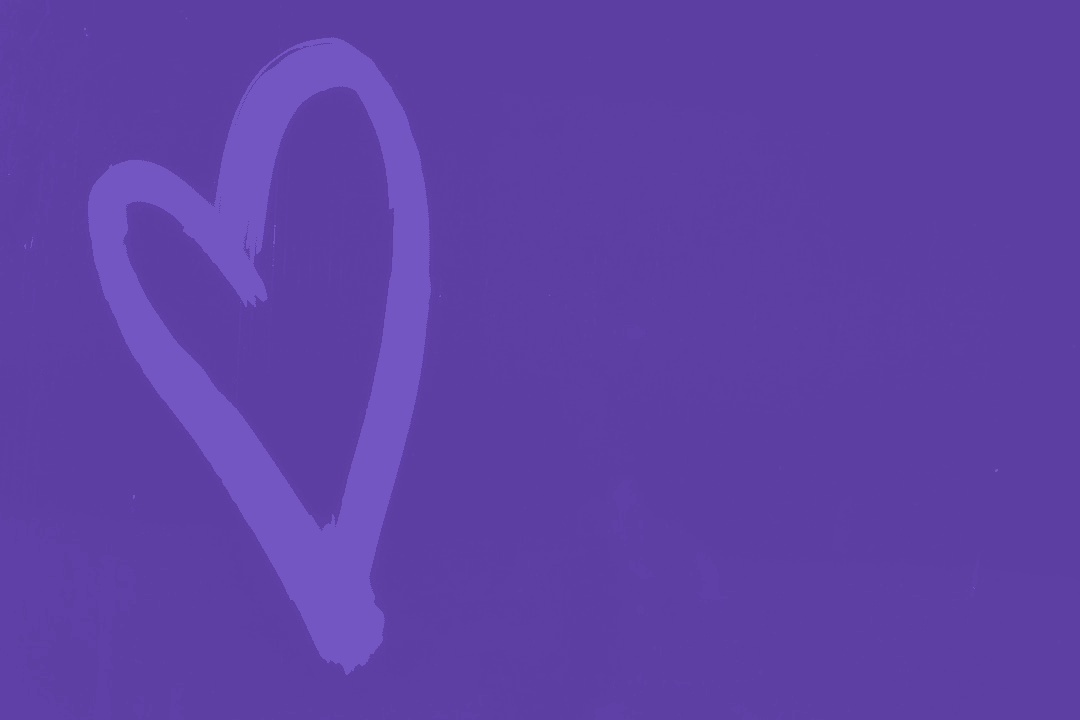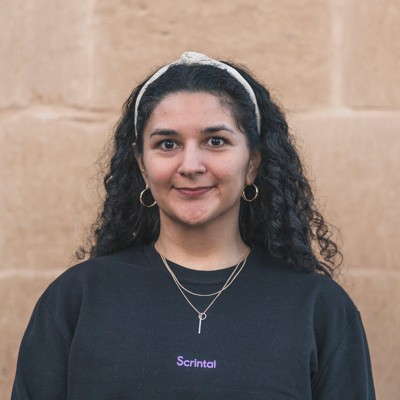We’re committed to making a product that answers the people’s needs. To do that, we have to think about users as real people with real life issues in their personal knowledge management system. Every time before we release an update to Scrintal, we think carefully about our users’ workflows and how these updates will help them do things better.
That might explain why so many of the users I’ve spoken to recently have highlighted Scrintal’s “visuality” and “minimalist UX”. Our goal is to develop a visual knowledge base that empowers knowledge workers to plan, ideate, develop and share ideas without friction in one place.
With these concepts in mind, I thought it would be a good time to showcase some of our users’ stories. Each of these individuals told me who they are, what problems led them to Scrintal and how their workflows improved after onboarding.
We think it’s good to be reminded as often as possible of the people we’re building Scrintal for, and why they are the heart of our app. They will take it from here.
My quest for gaining a sense of control over my ideas
Omar Regalado

In my job as an organizational consultant for multiple companies and nonprofit organizations, keeping a bird’s eye view over my projects can easily become a challenge as soon as the notes start to grow.
As a consultant, I help businesses and non-profits understand their stage of development and create the organizational structure which is required to reach the next stage of their growth.
I diagnose the capacities, constraints, and opportunities within organizations that can translate into actionable strategies in the market. This involves organizational design and organizational development achieved through interviews, meetings, data analysis, writing reports, presentations, and training workshops.
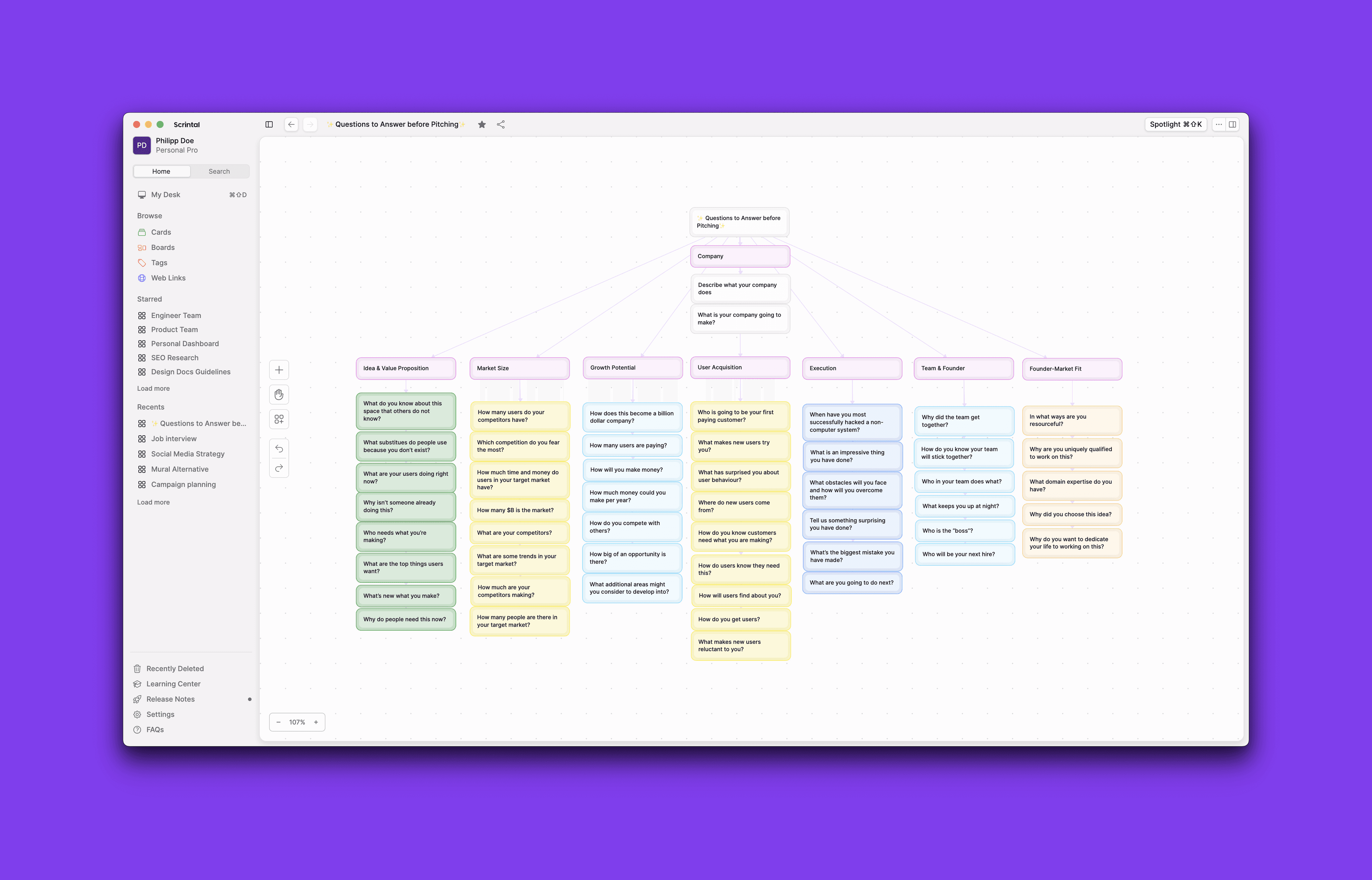
Even though I've been in this space for over ten years, the visualization of strategic projects can still be a struggle, especially when other people are involved. When handling multiple professional and personal projects, keeping the focus without missing the big picture, or losing details is often challenging.
When a new project reaches a point of saturation of topics and ideas, it’s hard to keep a high-level overview of everything. This brings tension by not having precise control over what is going on.
Usually, my way of organizing ideas is through mind maps. These can be zoomed in to work on one element of the map or zoomed out to review and update the whole structure. However, neither a single mind mapping tool nor a text-based app would allow me to carry out these tasks and give me the zoom-in-and-out effect.
Another issue I had to face while handling knowledge for my projects as an organizational consultant was creating a space in which different texts or topics to display as if laying the sheets on a table or post-it notes on a board. This ability was crucial for exploration, spotting connections, forming clusters, segmenting large groups of items, or sequencing them—among other uses; yet no tool seemed to answer that need.
I realized my current tool stack wasn't addressing my needs, so I started researching a tool to meet my requirements. That's when I came across Scrintal–thanks to a tweet. Originally, I thought it could be a tool to store and process PDF files, which I use a lot (just like LiquidText, an app I use to process these files).
However, Scrintal’s combination of the visual elements with a text editor proved very useful for brainstorming and storing information. This combination makes exploring and retrieving data from large texts (like my Zettelkasten Notes) easier while also helping me produce drafts for new texts with no friction.
The greatest impact Scrintal has had in my workflow is that it has brought an intermediate stage for a number of “works in progress,” in which the visual elements allow for a great snapshot of that work as a whole. This provides a helpful map that is always available upon re-entry with existing material. Also, the interface allows for additions in specific elements that make up that work or additions on the whole (board or space), which is very convenient.
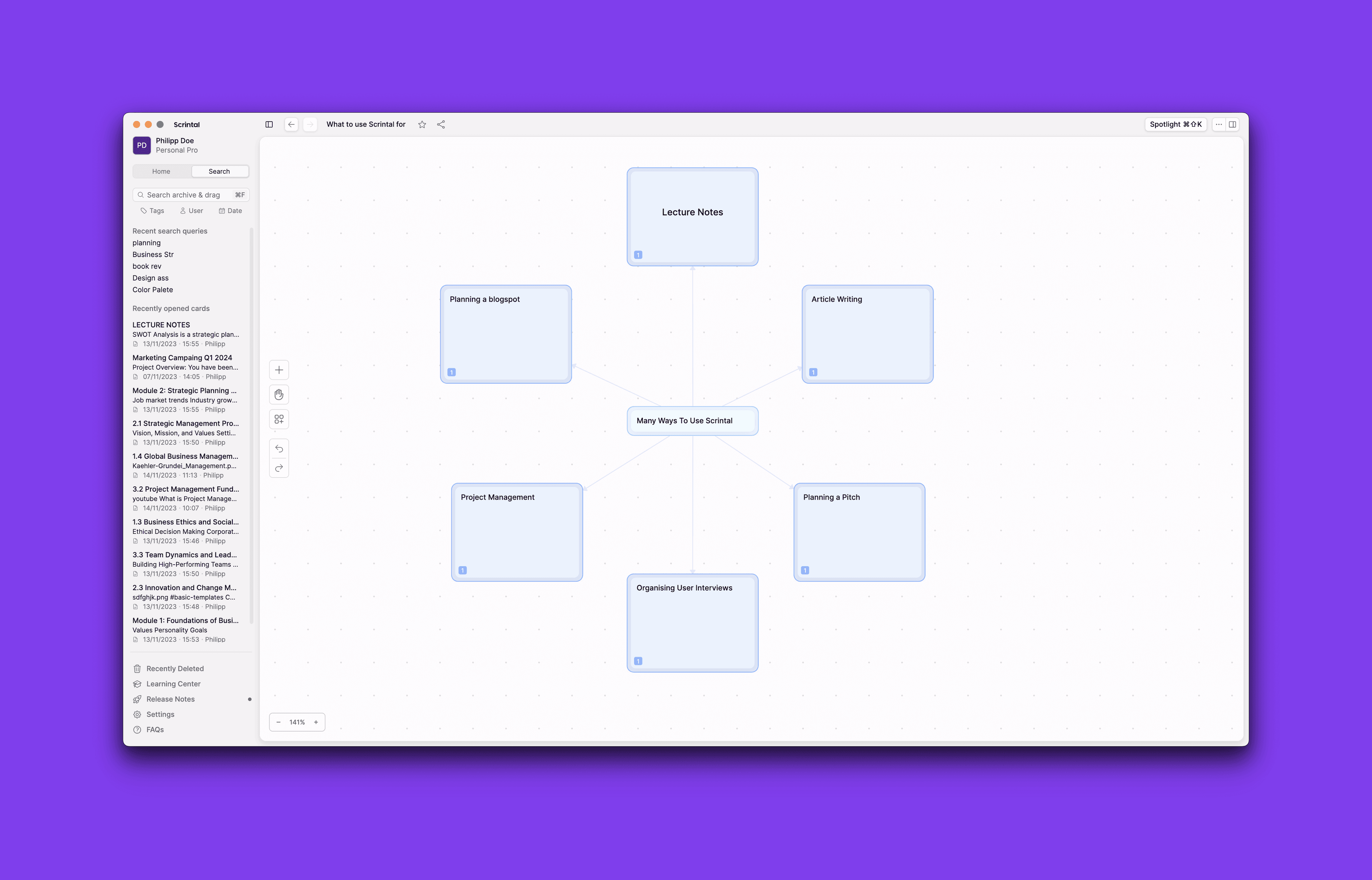
The greatest impact on my creative flow from Scrintal was providing a space to play with ideas. With a visual space, I can brainstorm topics by creating cards for each one. Then, it’s possible to move them around and spot connections, structure, or sequencing. Since most work isn’t finished in one session, the visual element is a helpful map when I return to it. Scrintal makes revisiting a work-in-progress much smoother.
While some of the tools I tried in the past that used bidirectional linking made the graphical element appealing, at least in theory, it wasn't that useful in practice. Roam Research solved my need to have a central hub for notes and text-based data, but its graph proved little to no use.
To fill this void, I briefly tested Hypernotes, Obsidian, or Logseq with similar results. For the visual element of my work, I used Scapple and Taskheat. Yet none gave me a useful visual element like Scrintal.
Since my onboarding in February 2022, Scrintal has taken an important role in my workflow. Some of the everyday uses I give to Scrintal are:
Creating first drafts for new posts
Outlining and structuring [big] reports
Storing permanent notes
Brainstorming ideas for projects and content
Creating timelines and/or sequences
As I integrated Scrintal into my workflow, I ended up having a space that is useful both to work on and to store information. Most of the other tools I use are either for one or the other. While all apps are designed to be worked on and store information, the interface tends to be more inviting for one or the other. Scrintal is good at both.
I feel that Scrintal serves as a great desk and archive at once through the visual component. You’ll see, what makes Scrintal different from other similar tools in the overcrowded market is the UX versatility between text editor, file/data archive, and visual mapping.
Scrintal is great for chunking big projects down, laying down ideas, topics, or themes in a visual space, and keeping an eye on the big picture. It’s a great tool for minimizing overwhelm and the typical feeling of missing the forest for the trees–that is, getting lost in the details while missing the big picture. In my experience, that is a common tendency whenever one engages in big reports, difficult texts, or deliverables that require a long time and various versions to finish.
I can finally see the context of all my thoughts
Gordon Corte
My work involves connecting famous people from the world of Movies, TV, Music, literature, as well as the newer generation of creators/influencers with Brands. This work entails keeping track of a tremendous volume of information. Finding a visual note-taking app that allows me to combine images with text, and connect them in a myriad number of ways is incredibly helpful in what I do.
My name is Gordon Corte and I have worked in the Celebrity Endorsement World for over twenty-five years. Currently I am at the ad agency VMLY&R in New York but have been at McCann, as well as a talent agent at ICM.
My work involves connecting famous people from the world of Movies, TV, Music, literature, as well as the newer generation of creators/influencers with Brands. This work entails keeping track of a tremendous volume of information.
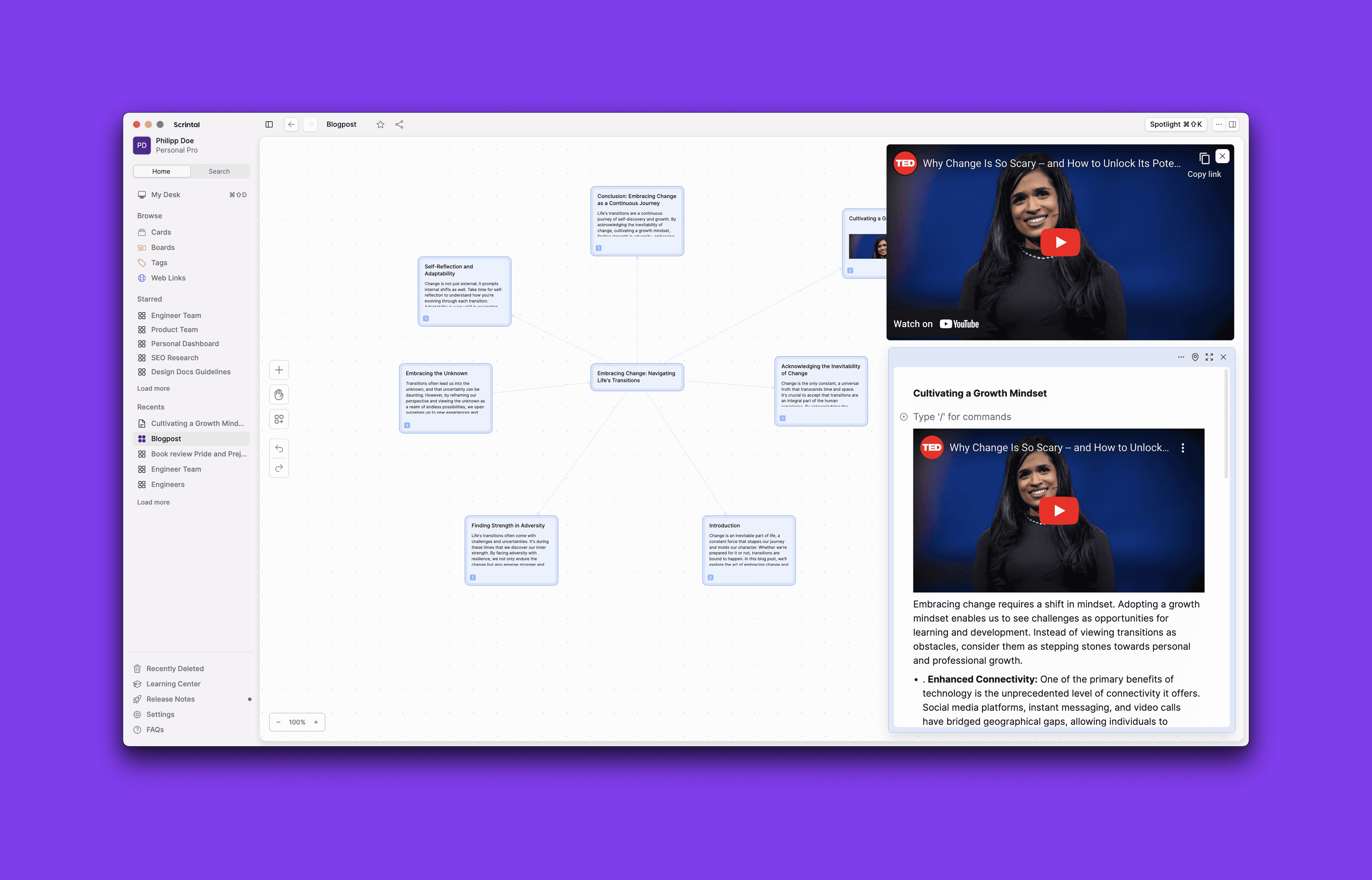
Keeping track of different talents, what they are doing, what they look like, and how they connect to each other is crucial in the work I do. Finding a visual note-taking app that allows me to combine images with text, and connect them in a myriad number of ways is incredibly helpful in what I do. I have used many text based apps for PKM over the years and was delighted when I discovered Scrintal.
Scrintal’s ease of use and flexibility has been the most important features for me. It serves multiple purposes- both in structuring information and also working as a general white board as I try to discover connections between disparate ideas. The visual aspect is the game-changer for me as it allows me to visualize these connections in ways other apps have not been able to do.
My usage on a daily basis is usually to continue building on existing boards that I have created and to use new boards to brainstorm. I have found that this really allows me to see all the pieces on the board at once, which provides a broad view of whatever question I am working on.
When talking with others about how they organize their information, I am always quick to point out Scrintal as part of the PKM stack, as it provides an easily usable visual interface to look at their project.
For me, Scrintal provides some of the best attributes of both white boards, mind-mapping, and knowledge management, all rolled into one product.
How I stopped doing system maintenance to do actual writing and creating!
Andy Sporring

I realized that all the tools I was using at the time had a big flaw: they didn’t give me clarity. Lack of clarity delayed my creative process so I wasted so much time to finalize my writing ritual. It was as if none of them would give me the clarity and visuality I was looking for to support my writing process.
I’m a multi passion creative writer whose expertise is in Notetaking and PKM. I write articles daily, and I host a Creativity Space on Twitter. I knew I had a problem when I realized I was spending more time doing system maintenance than actual writing/creating.
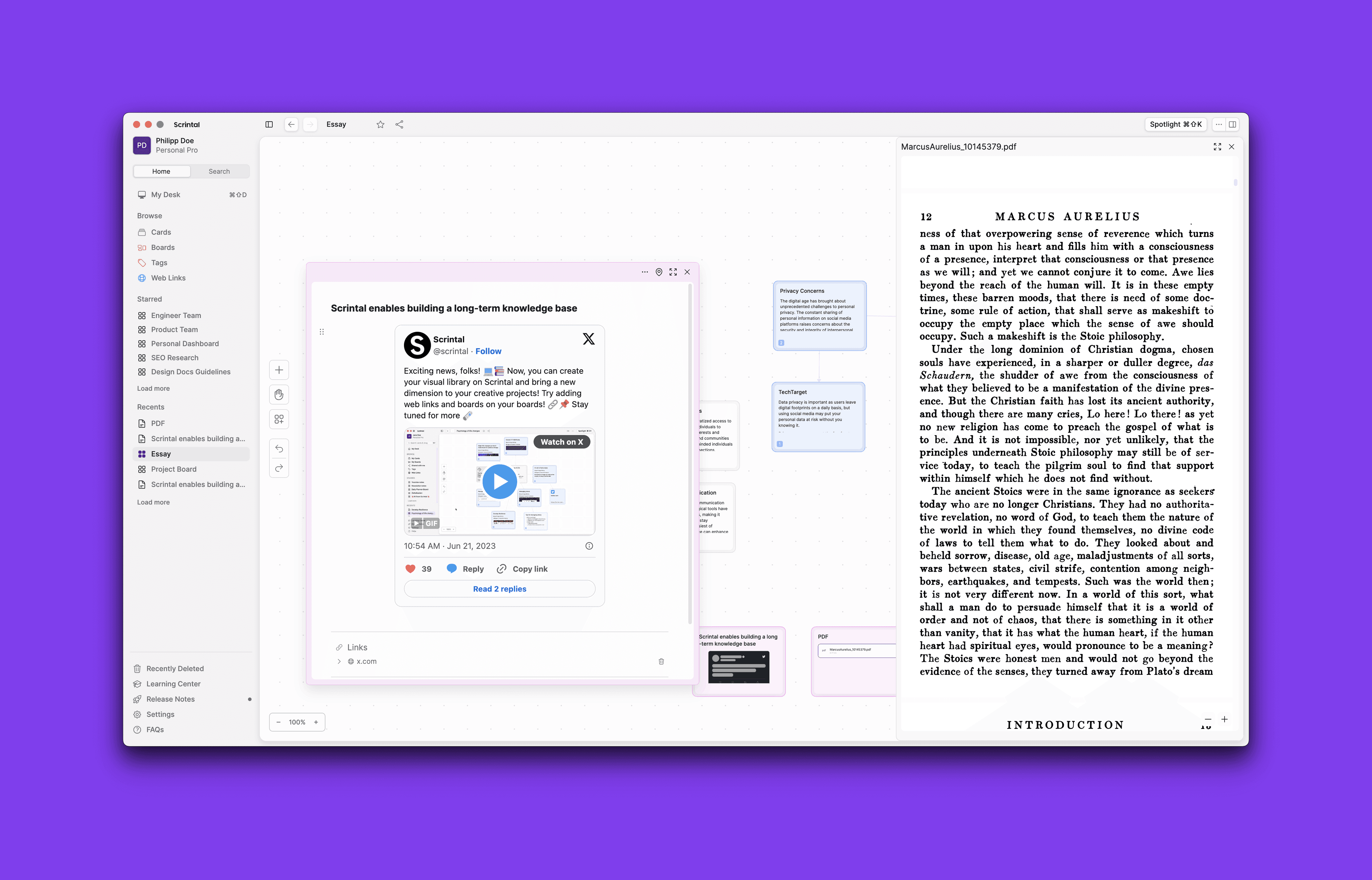
I realized that all the tools I was using at the time had a big flaw: they didn’t give me clarity. Lack of clarity delayed my creative process so I wasted so much time to finalize my writing ritual. I tried multiple apps, some text based, some more visual, yet none actually satisfied me. It was as if none of them would give me the clarity and visuality I was looking for to support my writing process.
Luckily, I didn’t give up in my search and that’s how I found Scrintal during an online demonstration of the product. I immediately joined the waitlist and following the onboarding session with the team, I decided to make it my primary note taking app.
I'm generally concerned about early-stage apps – what if they stop working properly after an update or founders decide to stop working on it. This was not the case with Scrintal. The team has always made me feel reassured about the safety of my notes and they made us feel part of the development process of the app.
Since my onboarding, I have been using Scrintal for almost everything! Every note I make lives in Scrintal. I use the app to do the research for my articles and essays, to write my Ship30for30 essays, as an idea board, and much more!
I have noticed that since I started using Scrintal as my primary PKM system, I have a clearer view of how my notes (cards) are linked together. Thanks to the clean interface, and the sense of clarity Scrintal offered, it stands out from the competitors without doubt.
As a Scrintal Ambassador, I advocate for the company and tell people how the app has given me the clarity I was looking for so long. The clarity I needed to take my creativity and writing to the next level, and to potentiate my productivity. I cannot imagine using any other note taking app.
Daiana Moyano
